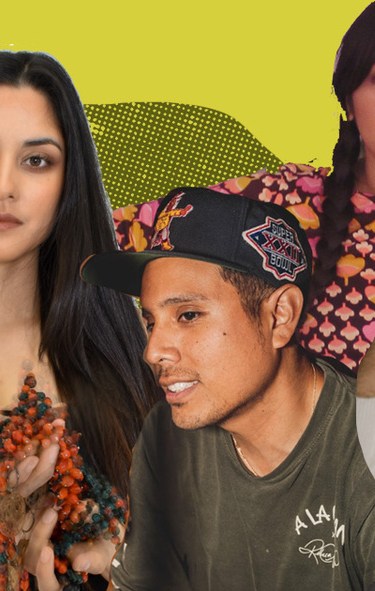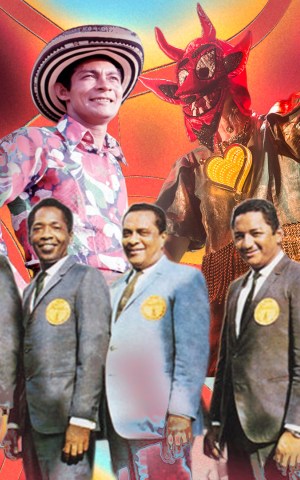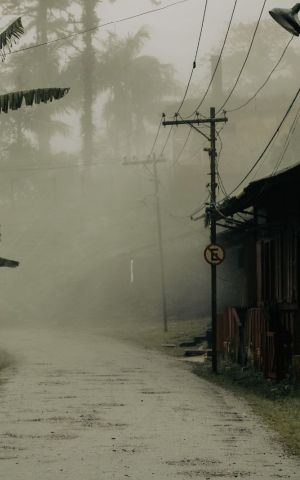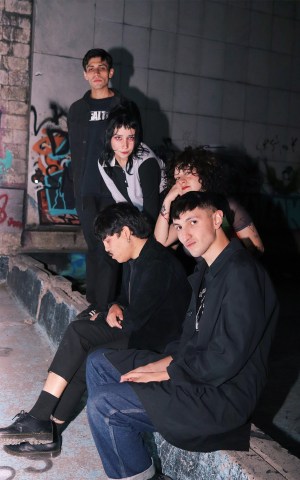In October 2019, Bolivia took center stage in the news as mass protests and social division exploded over the contested presidential election. Bolivia’s first high profile Indigenous president, Evo Morales, was nearing the end of his near 14-year presidency and sought re-election. Mass protests and violence ensued and Morales obtained asylum in Mexico while an interim presidential constituency took over.
Differing perspectives, increasing death tolls and uncertainty over what was to come had Bolivian-Americans on the edge of their seat alongside the rest of the world. With a newfound interest in Bolivia and Bolivian politics, many people asked questions like “Where is Bolivia?” and “What’s its culture like?”
Here’s a quick rundown. Bolivia is one of the most ethnically diverse populations in the world and about 60% of people self-identify as Indigenous. It’s known as the “heart of South America”—both in location and in spirit—with much to offer in perspective, culture, identity, style and art.
Over the last few years, awareness of Bolivia’s culture has slowly seeped into the American consciousness. Stories like Vogue’s piece on Mountain-climbing cholitas, ABC’s short documentary on Cholita wrestlers, The New York Times’ feature on Freddy Mamani’s Psychedelic Aymara Architecture and others have served to highlight distinct stylistic aspects of the South American country.

We spoke to five Bolivian-American creatives who are expanding these narratives through varied forms of artistic expression within fashion, photography, music, film and art to further provoke a dialogue about their hybrid cultural experience. Click through each page below for a different story. First up? Fernanda Alcocer:
FERNANDA ALCOCER // FASHION DESIGNER
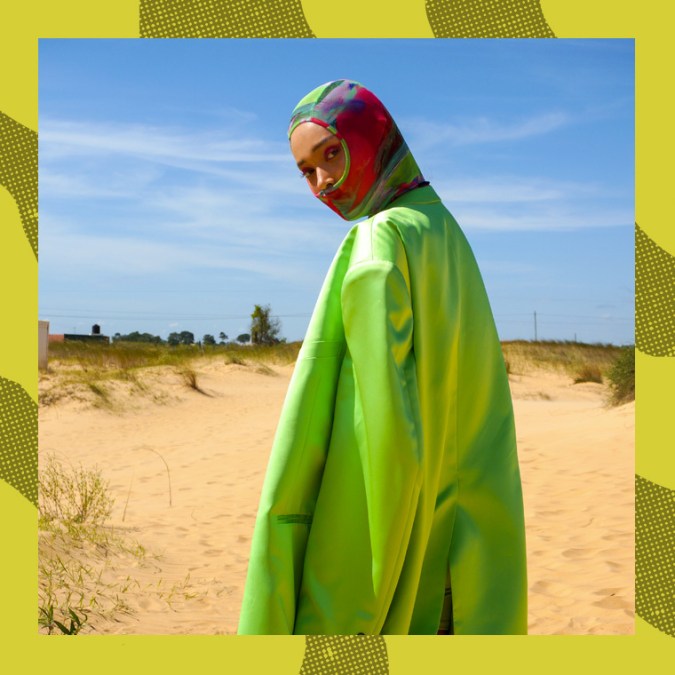
After graduating college in her hometown of Santa Cruz de la Sierra, Bolivia, Fernanda Alcocer jumped at the opportunity to work for TWELV Magazine [in New York] where she covered events, worked runway shows and met coveted designers like Mark Posen and Prabal Gurung.
The burgeoning streetwear scene was a launchpad of inspiration for Alcocer’s clothing brand ICE TEES—which she described as, “unisex, genderless streetwear & ready-to-wear brand, with a global sense of style.” All in all, it’s curated with diverse cultural representation in mind.
“I’d first think about functionality because we want the design and piece to be accessible for everyday wear but once we’d have the concept in mind we’d think, ‘how do we also incorporate what we consider to be the Bolivian cool factor’?”
What she once saw as commonplace Bolivian clothing, now strikes Alcocer as stylish inspiration for her designs. She pays homage to the elegant Cholita styles worn by Bolivian Indigenous women with pieces like the Hand Made Pollera Dress—which converts their traditional skirts (polleras) into full-length gowns—and adorned button-down shirts with iconic references to Bolivia’s majestic mountain Illimani.
In 2019, Fernanda’s fashion and streetwear journey came full circle when she partnered with NIKE BY YOU to design a shoe representative of her journey from Bolivia to the U.S.. The sneaker incorporated tributes to both her hometown of Santa Cruz and new home, New York, conveying the importance of opening opportunities for other immigrants to realize their dreams as well.
Fernanda Alcocer is preparing to launch the official ICE TEES web store and working on her “Made In Bolivia” event, created to promote other Bolivian designers and brands. Follow Fernanda’s journey @feraschmidt.
We spoke to five Bolivian-American creatives who are expanding their narratives through varied forms of artistic expression within fashion, photography, music, film and art. Click through each page below for a different story.
VANESSA ACOSTA // PHOTOGRAPHER & FASHION DESIGNER
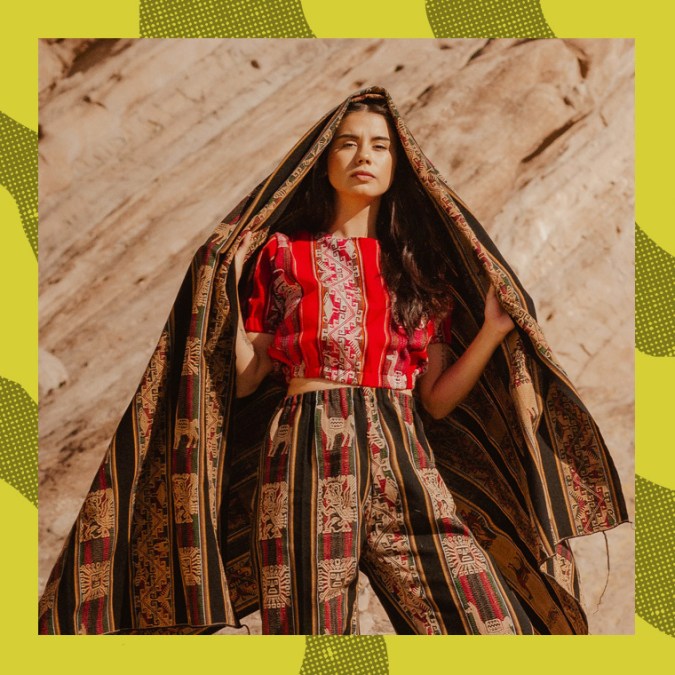
Photography was an unlikely medium for Vanessa Acosta, whose creative process and aesthetic emerged from a career in fashion design. She grew up in the mostly white, conservative Orange County, California and rarely connected with her Bolivian heritage outside of home.
But, when Acosta moved to Los Angeles with aspirations in garment design, she was able to explore her culture through indigenous textiles characteristic of the Bolivian cities of La Paz and Oruro—where her parents are from.
She launched her sustainable brand, Wasi Clothing—aptly meaning “Home” in Quechua—soon after. The design and branding process then provided a segue into photography, which led to the Bolivianita Series.
“I was designing clothing with Bolivian textiles so I got a camera to photograph the pieces and that started to garner attention,” she says.
Her followers made her keenly aware of how her art provided a platform for connecting with other Bolivians. In light of that, she realized the power and responsibility she had to represent Bolivian women to the rest of the world. She expresses her love of both fashion design and photography as a balancing act that has allowed her to explore and bring her closer to her identity.
”We are now finally speaking up, creating our own narratives, being the authors of our own stories, and expressing that through creative outlets and projects as first-generation Bolivian hyphenated Americans.”
Vanessa Acosta is continuing her on-going Bolivianita series and further developing the production of Wasi Clothing. You can see her work at @fromabolivian.
We spoke to five Bolivian-American creatives who are expanding their narratives through varied forms of artistic expression within fashion, photography, music, film and art. Click through each page below for a different story.
RODRIGO BELLOTT // FILM DIRECTOR
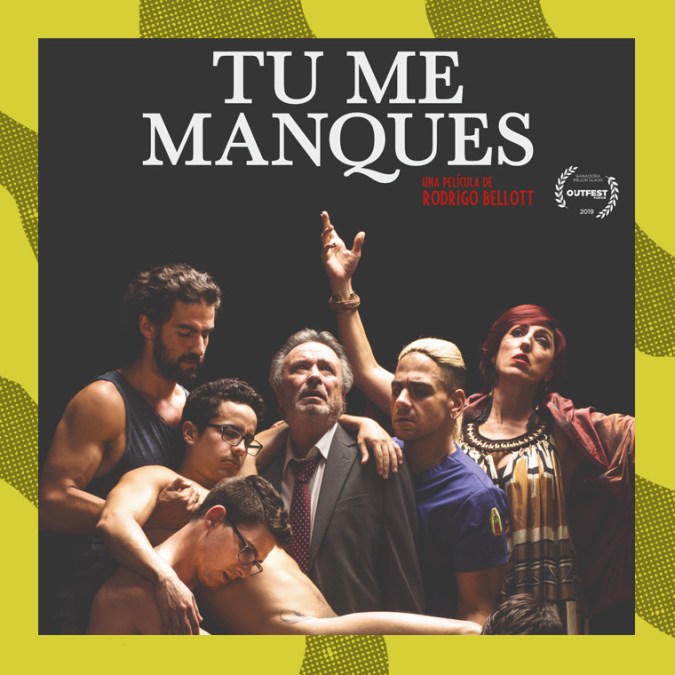
“It’s hard to come up with certain goals when there isn’t a reference. That’s why visibility and other success stories are so important for people to know it’s attainable and see themselves in that possibility.”
Playwright, actor, casting director and filmmaker Rodrigo Bellott found few Bolivian role models to look up to as an aspiring filmmaker in his early teens.
“There [was] maybe one film being produced every 3-5 years in the country at the time,” he says. “So, it was really tough to make my case and prove that filmmaking is a viable career path.”
Bellott took it as a challenge and sought out whatever opportunities he could.
“A Bolivian filmmaker had never been nominated for an Oscar, been to Sundance, to the Cannes Film Festival, or ever won a major international film award. So, all of those things that didn’t exist became my goals.”
Bellott was able to achieve his dreams through what he describes as “Bolivian spirit and tenacity.” In 2004, his breakout film, Sexual Dependency was selected as Bolivia’s first Academy Award entry for ‘Best Foreign Language Film.’ That was followed by his more recent 2019 feature Tu Me Manques, which was the Bolivian entry for the ‘Best International Film Feature’ at the 92nd Academy Awards.
Both films depict an honest and introspective exploration of sexual identity that not only mirrors Bellott’s own experience but highlights a reality that often lacks screen time in the film industry at large, especially in Bolivia—one that grapples with notions of machismo and acceptance of LGBTQ people.
“When I started to become more comfortable presenting myself as a gay man, I started to encounter some resistance of what I can or can’t do…I realized that as someone who now has significant achievements, and is a role model in film, I have a responsibility to advocate and be the role model I never had for LGBTQ youth in my country.”
Bellott quickly recognized the importance of growing and diversifying Bolivia’s untold and multifaceted cultural experiences through film. He co-founded Bolivia’s first film school— which now operates in three Bolivian cities. As a teacher and mentor, Bellott feels optimistic about its growth. When he first started, Bolivia produced 1-3 films. They now produce 30-40 feature films per year.
Rodrigo Bellott is finishing up a new horror film (Blood Red Ox) and touring Tu Me Manques. Keep up with his projects @bolivianbold.
We spoke to five Bolivian-American creatives who are expanding their narratives through varied forms of artistic expression within fashion, photography, music, film and art. Click through each page below for a different story.
CHARLENE ECKELS // PAINTER-ILLUSTRATOR
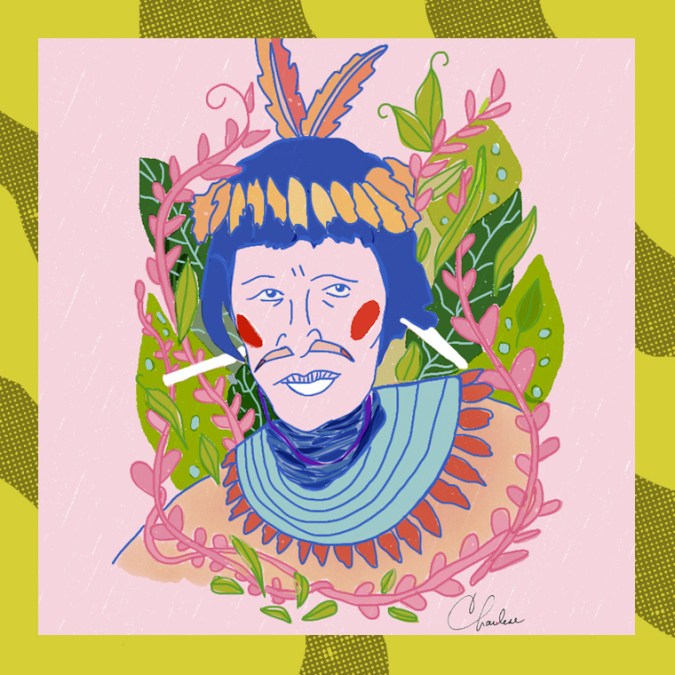
“I felt something punch me in my ankle [mid-flight]. I look down and [see] that a piece of the plane pierced itself and hit me, my jeans are ripped and there’s blood. When I looked up, the propeller was spinning and on fire!”
It’s not often that someone is able to detail the harrowing experience of a plane crash. Charlene Eckels was on her way to visit her grandmother, but this wasn’t just any visit.
Eckels was on a journey to discover her mother’s origins through a trip to Riberalta—known as Bolivia’s capital of the Amazon. Her grandmother introduced her to leather composed of scales of an ancient fish called Paiche and Sirari (black and red seeds), worn to ward off negative energy and bring good luck.
“For the first time, I really began to connect with what I knew about my mother’s culture and where she’s from. The food, music, dress, customs, mannerisms—it all started to come together.”
It was a world away from her hometown in Wilmington, North Carolina. As the only Latin-American person in her class, Eckels often had to explain her ethnicity to people who never fully understood. Inevitably, her identity seeped into her work as a multimedia artist through painting, illustration and graphic design. In fact, she recently made a building kit for children to create traditional Bolivian masks.
“There was no representation, so I resolved that I have to be the one to know the information and present it… I’m always asking myself, how do I show this in a way where people can come to not only understand but experience this culture.”
Her thorough and easy-to-grasp approach has garnered her recognition in various international exhibitions and as an honored member of the Sindicato Boliviano de Artistas en Variedades (Bolivia’s renowned union for artists).
Eckels recognizes that her research in art helps to preserve the cultural identity of the region and is committed to contributing to the longevity of her people’s history.
Charlene Eckels is commencing an animated graphic story chronicling her mother’s journey to the U.S. Check out more of her artwork and women’s collective at @charlene.charlene.charlene & @americanboliviancollective.
We spoke to five Bolivian-American creatives who are expanding their narratives through varied forms of artistic expression within fashion, photography, music, film and art. Click through each page below for a different story.
STEPHEN LEON // DJ & PRODUCER
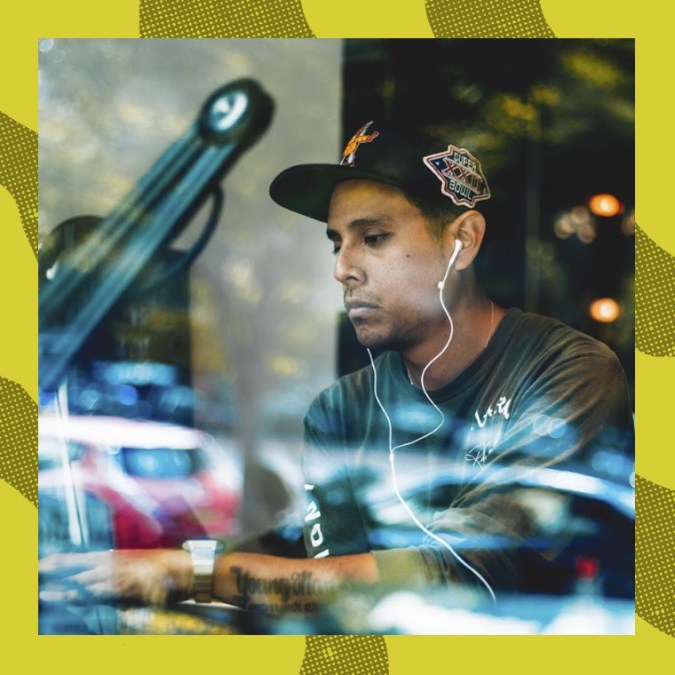
Quechua track titles and interludes weave their way into boom bap rap era beats as an unexpected amalgamation of two cultures. This surprise pairing established it’s delivery in Stephen Leon’s aka DJ Mastamind’s EP, INCA FACE KILLAH.
The title of his beat tape has a nuanced backstory that pays dual homage to his ancestry and the heavy-drum, lyrical rap style that can be defined through Wu-Tang Clan icon Ghost Face Killah.
“Growing up I’d always get asked questions about my “indigenous features,” he says. “They would often say ‘you have a cara de Indio’, so I adopted that description as a source of pride.”
Leon’s mom is from Cochabamba, Bolivia and his dad is from Chalatenango, El Salvador.
“Identifying as a Spanish-speaking Indigenous person usually opens up a whole conversation with some people, leading into various topics surrounding the connection of Indigeneity and Latinidad. I try to educate other people that may not understand the source of where that identification comes from.”
The presentation of his culture has been a constant thread of influence for his music, which started with DJing and progressed to beat making.
“I saved up to get my first turntables in middle school,” he reminisces. “At the time, I knew I really wanted to be a scratch DJ and the only thing that was accessible to me [were] my mom’s Bolivian records. Some of Bolivia’s Indigenous music has a lot of stops, chants and yells, and surprisingly scratching works pretty well.”
His DJing progressed to ’90s era boom bap rap records, which Leon characterized as a “pure hip hop training camp,” now often relegated to underground music arenas but still recognized as a foundational pillar of the essence of hip hop. This style is echoed in the emerging hip-hop scene in Bolivia.
“Two years ago on a visit, I noticed that hip-hop hit Bolivia hard—I’m talking like scenes back to the 80s and 90s—with kids break dancing, doing graffiti, DJing, rapping, etc. Seeing that has given me the inspiration to go back there and open a DJ academy in Cochabamba.”
Stephen Leon is touring as a DJ for artists under independent label Shaap Records. You can listen to his music on Bandcamp and check out what he’s up to @djmastamind.
